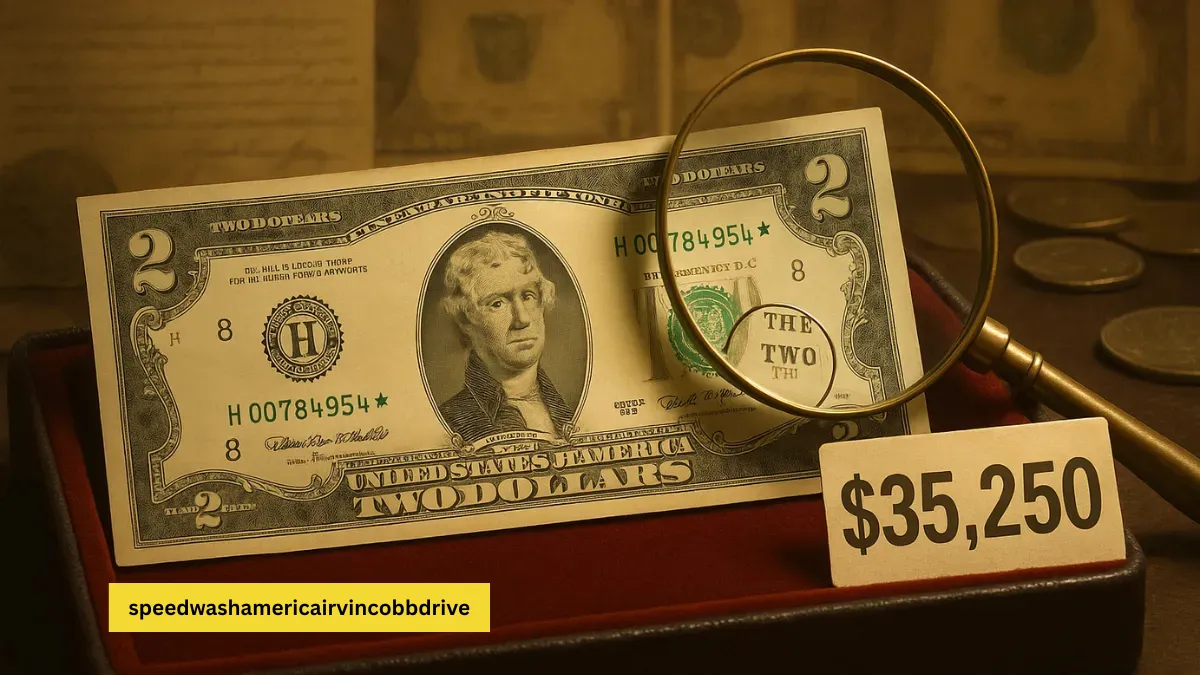Have you ever stumbled across a $2 bill and wondered if it’s worth more than face value? You’re not alone. Among all U.S. currency, the 1976 $2 bill stands out as one of the most fascinating — and misunderstood. With a unique history, limited circulation, and growing collector interest, this note has become a hidden gem in the world of numismatics.
Here’s everything you need to know about this curious collectible — and how it might be worth far more than $2.
Why the 1976 $2 Bill Is So Special
The 1976 $2 bill wasn’t just any reprint — it marked a historic occasion. Released on July 5, 1976, to celebrate America’s bicentennial, it honored 200 years of U.S. independence.
- Front: Still features Thomas Jefferson.
- Back: Redesigned to showcase John Trumbull’s famous painting, The Declaration of Independence — a powerful tribute to America’s founding.
While earlier versions of the $2 bill existed, the 1976 release gave it renewed attention and historical significance.
The Bill No One Wanted — At First
Despite the patriotic timing, the bill faced resistance. At the time, many Americans were in a recession and found the $2 denomination awkward to use. Suspicion even grew that it was bad luck or a counterfeit.
As a result, many 1976 $2 bills were stored away in drawers, never spent — which means a lot of them survive today in excellent condition.
What Makes a 1976 $2 Bill Valuable?
Not every 1976 $2 bill is worth a fortune, but certain traits can drastically increase value. Here’s what collectors hunt for:
1. Condition (Grade Matters)
Uncirculated or crisp bills with no folds, creases, or stains are significantly more valuable than worn ones.
2. Fancy Serial Numbers
Low serial numbers (like 00000033), repeating digits, or interesting patterns (e.g., 12344321) can make a bill highly desirable.
3. Star Notes
Look for a small star (*) at the end of the serial number — it means the bill was a replacement printed in smaller quantities, making it rarer.
4. Federal Reserve District
The letter and number on the left of the bill indicate the issuing Federal Reserve Bank (A–L). Some districts printed fewer notes, which can add to value.
5. First-Day Issue Stamps
Post offices stamped some 1976 $2 bills to commemorate the release. Bills with a July 5, 1976 stamp may be worth significantly more, especially if they’re still in pristine condition.
6. Autographs or Errors
Some bills were autographed by Treasury officials or have rare printing errors, like miscuts or mismatched serial numbers. These are often top-dollar collectibles.
How Much Is a 1976 $2 Bill Worth Today?
Here’s a snapshot of what different versions of the 1976 $2 bill might be worth in today’s collector market:
| Condition / Feature | Estimated Value |
|---|---|
| Heavily circulated / common | $5–$10 |
| Uncirculated Dallas district note | ~$9.90 |
| Crisp Kansas City note | ~$16.50 |
| Star note in uncirculated condition | $95–$400+ |
| Autographed Kansas City star note | ~$257 |
| Fancy serial number (e.g., 00000033) | ~$2,000 |
| Full pack of 100 uncirculated bills | ~$3,450 |
| Serial number “00000002” | ~$9,400 |
| Star note with serial number “1” | $35,250 (record) |
How to Tell If Your $2 Bill Is Real
Although counterfeit $2 bills are rare, you should still know how to verify authenticity:
- Paper Texture: Should feel like other U.S. bills — not too smooth or glossy.
- Serial Numbers: Must match and be properly aligned.
- Engraving Quality: Lines should be sharp and detailed, not blurry.
- No Modern Security Features: 1976 bills don’t have watermarks or color-shifting ink — that’s normal.
Are There Valuable Printing Errors?
Yes. Printing errors on 1976 $2 bills — such as:
- Off-center prints
- Mismatched serial numbers
- Missing seals or ink smudges
— can fetch hundreds to thousands of dollars, depending on rarity and condition.
Final Thoughts: Is Your $2 Bill a Hidden Treasure?
The 1976 $2 bill may look ordinary, but it holds rich history — and potential hidden value. With special features like star notes, rare serial numbers, and pristine condition, that old banknote could be worth far more than $2.
So before you spend it or stash it away, take a second look. You might be holding a small piece of American history — or a small fortune.
FAQs
Q: Are all 1976 $2 bills valuable?
A: No. Most are only worth a few dollars above face value, but condition, serial numbers, and rarity make a big difference.
Q: Where can I sell a valuable $2 bill?
A: Start with a local coin or currency dealer, or contact major grading services like PMG or PCGS Currency. Online auction sites and collectors’ forums are also good options.
Q: What’s the easiest way to check a bill’s value?
A: Compare yours to recent sales on platforms like eBay or Heritage Auctions, and look for matching serial numbers and features.

